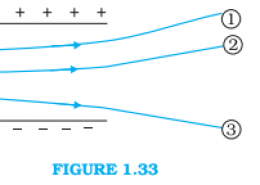Class-12th Physics, CBSE and UP Board Electric Charges and Fields, Chapter-1, Exercise -1, Additional Exercise, Q-1.34 NCERT Solutions for Class 12th Physics
Tiwari Academy Discussion Latest Questions
Class-12th Physics, CBSE and UP Board Electric Charges and Fields, Chapter-1, Exercise -1, Additional Exercise, Q-1.32 NCERT Solutions for Class 12th Physics
Class-12th Physics, CBSE and UP Board Electric Charges and Fields, Chapter-1, Exercise -1, Additional Exercise, Q-1.1 NCERT Solutions for Class 12th Physics
Class-12th Physics, CBSE and UP Board Electric Charges and Fields, Chapter-1, Exercise -1, Additional Exercise, Q-1.30 NCERT Solutions for Class 12th Physics
Class-12th Physics, CBSE and UP Board Electric Charges and Fields, Chapter-1, Exercise -1, Additional Exercise, Q-1.29 NCERT Solutions for Class 12th Physics
Class-12th Physics, CBSE and UP Board Electric Charges and Fields, Chapter-1, Exercise -1, Additional Exercise, Q-1.27 NCERT Solutions for Class 12th Physics
Class-12th Physics, CBSE and UP Board Electric Charges and Fields, Chapter – 1, Exercise – 1, Additional Exercise, Q-1.26 NCERT Solutions for Class 12th Physics
Class-12th Physics, CBSE and UP Board Electric Charges and Fields, Chapter-1, Exercise – 1, Additional Exercise, Q-1.26 NCERT Solutions for Class 12th Physics

![(a) A conductor A with a cavity as shown in Fig. 1.36(a) is given a charge Q. Show that the entire charge must appear on the outer surface of the conductor. (b) Another conductor B with charge q is inserted into the cavity keeping B insulated from A. Show that the total charge on the outside surface of A is Q + q [Fig. 1.36(b)]. (c) A sensitive instrument is to be shielded from the strong electrostatic fields in its environment. Suggest a possible way](https://discussion.tiwariacademy.com/app/uploads/2021/02/F-1.36-260x185.png)